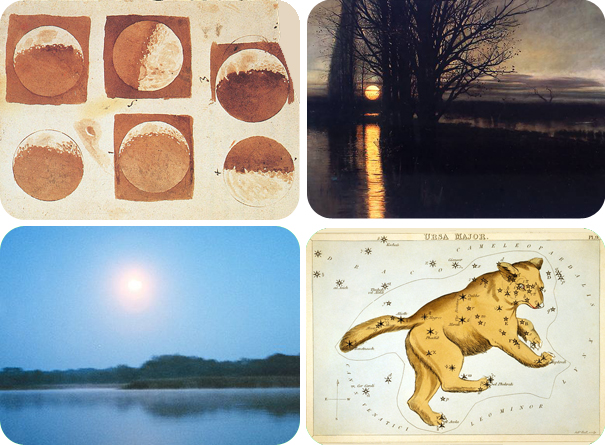Lab #2. Observing the Sky
Students observe the evening sky over a eight-day period, tracking the movement and changes in the appearance of the Moon, and identifying the North Star. They combine their own observations with a theoretical model governing the orbital motions of the Moon and the Earth. They strengthen their understanding of how and why the Moon appears differently at different times of the day, month, and year. Students also construct their own sextants from household materials and use them to measure the elongation angle between the Moon and the Sun, and the lunar altitude above the horizon. They use these data to make concrete predictions about future events on the celestial sphere, and also estimate their own latitude here on Earth.
Resources
|  |